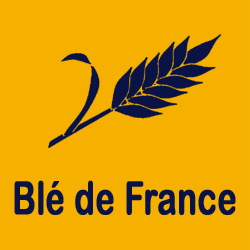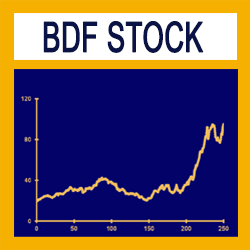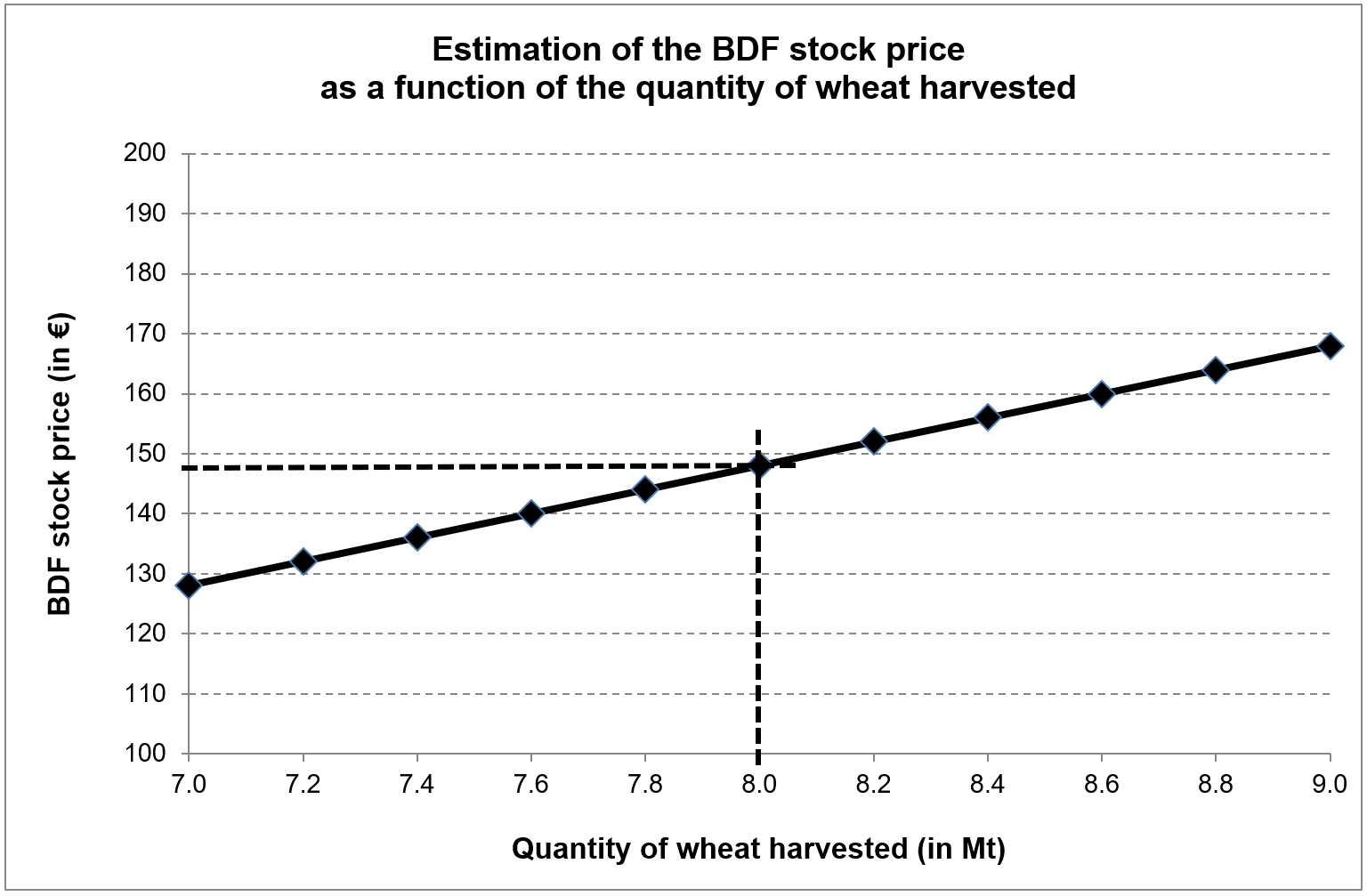
New on SimTrade?
Register for free and join the SimTrade community.
By connecting to this website you accept Terms of use.
 Understanding the operations of a wheat producer
Understanding the operations of a wheat producer
|
The simulation Harvest time is the follow up to the simulation The price of wheat. At the start of the simulation, you own an account worth €100,000 in cash and 1,000 Blé de France shares. As a SimTrader, your goal in this simulation is to maximize your trading gains. In this simulation, you can send all types of orders to the market: market orders (MKT), limit orders (LMT), best limit orders (BL), stop orders (STP) and stop limit orders (STL). The duration of the simulation is initially set to 10 minutes, which corresponds to a 24-hour trading day. Using the timeline, you can increase or decrease the simulation speed at any time. |
Your grade for this simulation (100 points) takes into account the following elements:
|
Blé de France is a French wheat producer. The firm was created in 1780 by the Turgot de la Beauce brothers, nephews of the famous financial controller of the King of France Louis XVI. The firm is still managed by a descendant of the founders, Charles-Louis Turgot de la Beauce, who is an emblem of the cereal industry in France. Blé de France fields are mainly located in the Beauce area in the center of France. The sales structure is composed of two parts:
|
 |
The ticker symbol for Blé de France shares traded on the market is BDF. Blé de France was introduced in the French stock market in the 1970s. During the past few years, its stock price soared. This strong price increase can be partly explained by the strong increase in the price of wheat at the world level. Blé de France has recently announced financial results better than expected: an earnings per share (EPS) of €12 higher than the market expectation of €10 given by the consensus. The price of wheat also strongly increased. As a result, the BDF stock price has jumped to a record level of €140. |
 |
Traders now seem to focus on factors internal to the company. Blé de France is expected to announce its new harvest forecast for the current year. There are also investments to be made for compliance reasons. A dozen financial analysts follow BDF stocks and participate in the market consensus. Some analysts believe that the stock price of BDF shares is overestimated due to the uncertainties affecting the company and the sector. The average price target is €130. It is always said that the company could interest large agro-food groups that would like to take position in the sector. The rumors are going well and we should see more clearly at the end of this day. What is the firm going to announce? How will the market react to the news? And especially how will you react? Those are the questions... |
The World Cereals (WC) investment fund has developed a model that links the BDF stock price to the quantity of wheat harvested by Blé de France. This model takes into account the structure of the company's turnover, that is to say the sales from multi-year contracts at a fixed price and the sale of the rest of the harvest on the international wheat market at a market price which varies in the time. The stock price estimate takes into account the following:
The table below shows the estimate results given by the WC model.
The model assumes that the market price for wheat is fixed and equal to its current level. It is also assumed that the quantity produced by Blé de France has no impact on the price of wheat on the international market, Blé de France being a small producer at the world level. The graph below represents the BDF stock price as a function of the quantity of wheat harvested by Blé de France according to the WC model. 
|
The simulation Harvest time is interested in the information about the company and its interpretation by the market. What is the relevant information about the company? How is this information interpreted by the market? What is information incorporated in the stock price? This simulation looks at a key concept in financial markets: information. Teaching goals: the simulation Harvest time is the opportunity to understand deeper how information is incorporated by the market. Learning objectives: this simulation will help you to learn the following elements of finance:
Before or after launching this simulation, you can learn more on information in financial markets by taking related courses to the simulation. Download the case note to help you during the simulation. |
 |
Gabriel Eschbach « The key is knowing how to process information. The market is anticipating what will happen, but things never happen as expected. The market reacts to the rumor and adjusts to the news. And you! What do you expect? How will you react? What are you going to do? » |
|
Professor François Longin « Before starting the simulation, remember that the market is always right; and that the market is always right even when it is wrong... » |